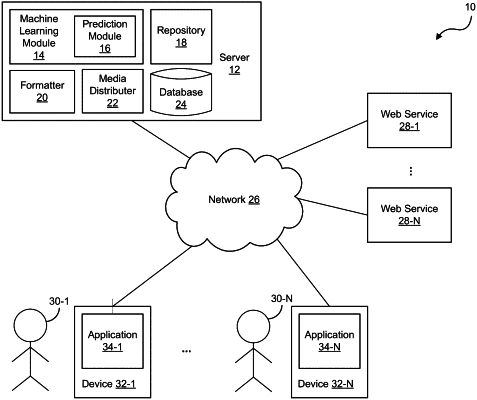| CPC H04L 67/06 (2013.01) [G06F 16/958 (2019.01); G06N 5/04 (2013.01); G06N 20/00 (2019.01); H04L 67/02 (2013.01)] | 15 Claims |

|
1. A server based system, comprising:
a repository operable to store a plurality of web components, the web components including audio modules, text modules, web based application modules, video modules, image modules, and mapping modules;
a database operable to store identifiers of a plurality of users, the identifiers including Internet searches, website selections, user input information, device identifications, device locations, peripheral movements, and human-device interactions;
a machine learning module operable to generate a model of computing device interactions of the plurality of the users based on the stored identifiers of the plurality of users, to monitor a computing device interaction of a first of the plurality of users, to process the computing device interaction of the first user through the model, and to predict a format of web component delivery desired by the first user in a website based on the model; and
a formatter operable to retrieve a portion of the web components from the repository, and to automatically format the retrieved web components in the website for the first user based on the predicted format of web component delivery,
wherein the machine learning module is further operable to process the computing device interaction of the first user via supervised machine learning, unsupervised machine learning, or semi-supervised machine learning, and wherein the machine learning module is further operable to enhance a prediction of the format of web component delivery desired by the first user via said supervised machine learning, said unsupervised machine learning, or said semi-supervised machine learning of subsequent computing device interactions of the first user.
|